2015 Toyota Prius Plug-In Service, Tires & Repairs
Get Started
Complete Auto Care for Your 2015 Toyota Prius Plug-In
-
TIRES FOR YOUR 2015 Toyota Prius Plug-In View Tire Info GET TIRE PRICING
-
REPAIR FOR YOUR 2015 Toyota Prius Plug-In View Repair Info SCHEDULE REPAIR
-
MAINTENANCE FOR YOUR 2015 Toyota Prius Plug-In View Maintenance Info SCHEDULE MAINTENANCE
-
OFFERS FOR YOUR 2015 Toyota Prius Plug-In Limited Time Tire Offers VIEW ALL COUPONS
2015 Toyota Prius Plug-In Tires
Recommended Tires | Tire Information
2015 Toyota Prius Plug-In Tires Sizes, Speed Ratings, and Inflation
Not sure about your 2015 Toyota Prius Plug-In tire size? Use the following chart to find information on tire size, speed rating, and inflation.
| Trim Level | Speed Rating | Inflation in PSI F/R | Tire Size |
|---|---|---|---|
| 2015 Toyota Prius Plug-In Base | S | 35 PSI/33 PSI | P195/65R15 |
|
2015 Toyota Prius Plug-In Base Speed Rating: S Inflation F/R: 35 PSI/33 PSI |
* Note: these models have different tire sizes depending on vehicle options.
Recommended Tires for Your 2015 Toyota Prius Plug-In
What tires are best for a 2015 Toyota Prius Plug-In? Check out the following tire brands and types.
 Blizzak WS90
Blizzak WS90
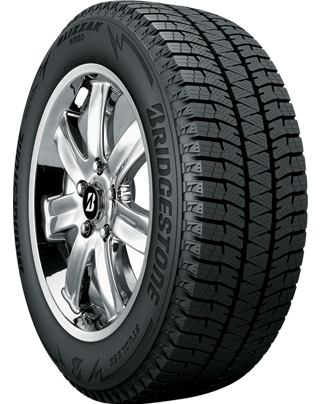
- No warranty
- Winter
- Winter
 Ecopia EP422 Plus
Ecopia EP422 Plus
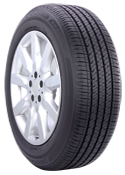
- Platinum Pact Limited Warranty
- All-Season
- Performance
 Turanza QUIETTRACK
Turanza QUIETTRACK
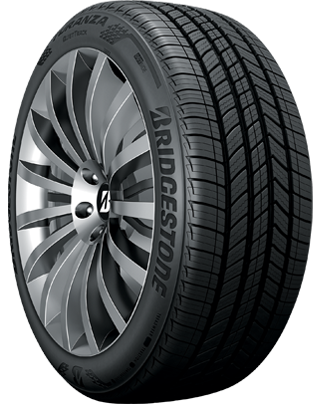
- No warranty
- All-Season
- Performance
 WEATHERPEAK
WEATHERPEAK
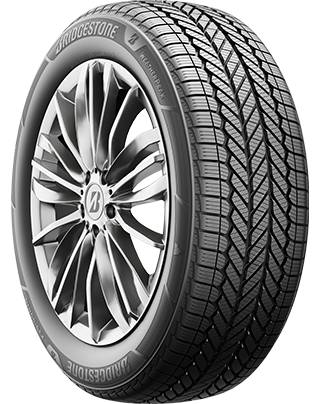
- Platinum Pact Limited Warranty
- All-Season
- Passenger Tires
 ALL SEASON
ALL SEASON
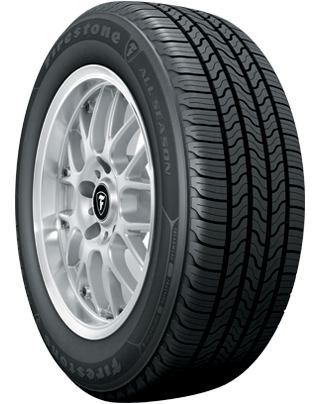
- No warranty
- All-Season
- Passenger Tires
 Affinity Touring S4 FF
Affinity Touring S4 FF
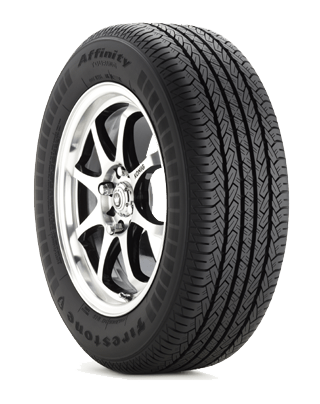
- Gold Pledge Limited Warranty
- All-Season
- Passenger Tires
 FT140
FT140
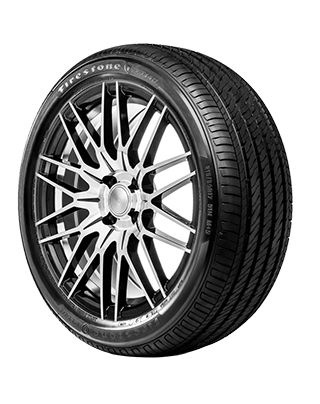
- No warranty
- All-Season
- Passenger Tires
 WEATHERGRIP
WEATHERGRIP
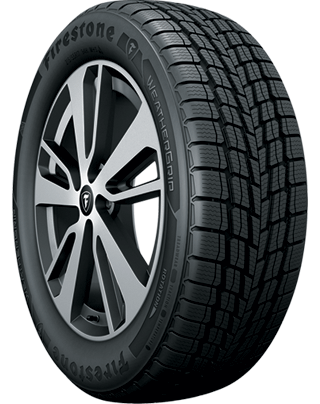
- No warranty
- All-Season
- Passenger Tires
 Winterforce 2
Winterforce 2
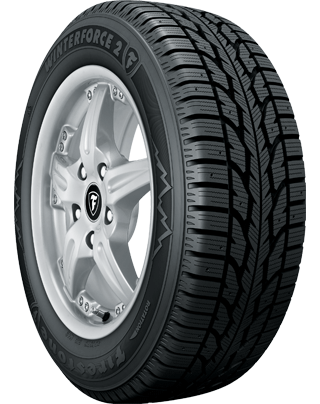
- No warranty
- Winter
- Winter
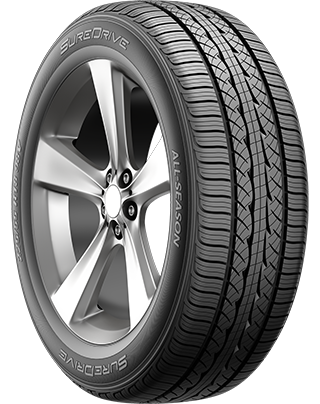
- No warranty
- All-Season
- Passenger Tires
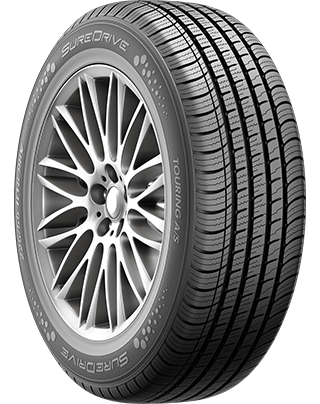
- No warranty
- All-Season
- Passenger Tires
 Extensa A/S II
Extensa A/S II
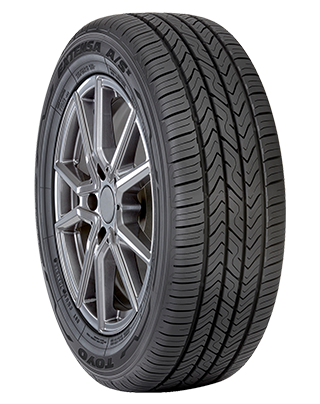
- No warranty
- All-Season
- Passenger Tires
Choosing 2015 Toyota Prius Plug-In Tires
Apart from finding the right tire size, you also want to think about a couple of other things when getting new Toyota Prius Plug-In tires like how and where you drive, and how much you want to spend. When thinking about your driving conditions, consider where you live (mountains vs. city vs. countryside) and the kind of weather can catch you off-guard. (Watch out Tornado Alley!) Many drivers who live in states that experience all four seasons choose to purchase two sets of tires: one for summer and one for winter. Other drivers buy one set of all-season tires instead. That way they don't have to return to the tire shop and their vehicle is always ready for sun, rain, and light snow!
Driving style is next on the list to think about when buying tires. If you're a diehard off-roader, you have very different tire needs than a highway commuter who doesn't leave the paved path. Browse Toyota Prius Plug-In tires online or come to your nearby Firestone Complete Auto Care for help selecting the tire that's right for you.
Installing Toyota Prius Plug-In Tires
Firestone Complete Auto Care has been a leading tire provider for more than a century. We're your one-stop shop for tire installation, rotation, and ongoing maintenance! Buy 2015 Toyota Prius Plug-In tires online and schedule your installation when it's convenient for you.
Questions About 2015 Toyota Prius Plug-In Tires
-
Why does Toyota tire inflation matter? A small decrease in tire pressure can have a big impact on your driving. Maintaining proper tire pressure can help improve braking time, increase fuel economy, and boost tire lifespan.
-
Why are there numbers on the side of my Toyota Prius Plug-In tires? Your tire sidewall gives you information about load carrying capacity, speed rating, treadwear, traction, and tire size. Talk to one of our tire technicians to learn how to read the numbers on your tire!
-
How do I check the tread depth on my Toyota tires? Stay on top of your tire tread depth to help avoid a dangerous drive. You can check tread depth with a penny. Hold the penny so that Abraham Lincoln is facing you, then place your penny into a tread groove upside down. If you can see the top of Abe’s head, your tread is shallow and it might be time for new Toyota Prius Plug-In tires. Grab a penny. Hold the so that Abe Lincon's head is facing you and his hair is pointing toward the ground. Then, place the penny into a tread groove. If you can see the top of Abe’s head, your tread is shallow and it might be time for new Toyota Prius Plug-In tires.
Repair Services for Your 2015 Toyota Prius Plug-In
When to repair, when to replace? Click on a repair below to learn more about Toyota Prius Plug-In repairs at Firestone Complete Auto Care.
Get Repairs for Your 2015 Toyota Prius Plug-In
Car repairs: for many drivers, that phrase is a dreadful one. But we work to provide you with a different experience at Firestone Complete Auto Care. Bring your 2015 Toyota Prius Plug-In in for repair services and our technicians will take care of your Prius Plug-In like it was their own. We'll work to evaluate the scope of repairs needed and explain your options. We’ll never recommend a repair we don’t think is necessary for your safety or the performance of your Toyota.
How Much Does Toyota Prius Plug-In Repair Cost?
Several factors can affect the cost to repair your 2015 Toyota Prius Plug-In, including what kind of repair you need, costs of replacement parts or repair supplies, how much labor the repair will take, and your locale. But no matter your location, you may be able to save money with one of our many auto repair coupons or offers.
A few different aspects can influence repair costs for your 2015 Toyota Prius Plug-In, like
Questions About 2015 Toyota Prius Plug-In Auto Repairs
-
Do I still need scheduled maintenance even when nothing is wrong with my Toyota? The cheapest 2015 Toyota Prius Plug-In repair is the one that isn’t necessary in the first place! Staying up-to-date with your car’s scheduled maintenance services is a great way to keep future repair costs low.
-
Should I bring my Toyota in even if I can't pinpoint the problem? You know your vehicle. You also know when something feels 'off' with your vehicle. Pay attention when things don't run like they used to and stop by for a Courtesy Check when you notice an unusual sign, smell, or sensation. We might be able to help you prevent Toyota Prius Plug-In repairs!
-
Do I have to get the repairs you recommend for my Toyota? We won’t recommend a service or repair for your 2015 Toyota Prius Plug-In unless we think it’s necessary to keep you safe. Want to know more about a specific recommended repair? Ask! We’re here to help.
Brake Repair for Your 2015 Toyota Prius Plug-In
Your Toyota Prius Plug-In may be powered by a strong engine. But if you can't stop it, then it's scrap metal. If you notice your brakes are squeaking or not working well, don’t wait! Safe driving and responsive brakes go hand in hand. Plus, ignoring your brake problems can result in more damage and higher brake repair bills. Get your 2015 Toyota Prius Plug-In brakes fixed at Firestone Complete Auto Care. We offer a variety of brake services like brake pad/shoe removal and replacement, brake rotor/drum refinishing, brake fluid exchange/bleeding, and brake caliper and wheel cylinder service.
Answers to Your Prius Plug-In Brakes Questions
-
What is causing my Prius Plug-In to shake when I brake? Faulty brake calipers, worn brake pads or rotors, loose or worn suspension parts, and warped rotors can cause your Prius Plug-In to shake during braking. If you’re experiencing odd brake behavior, schedule a free brake inspection at a nearby Firestone Complete Auto Care.
-
How often do I need to replace my Prius Plug-In brake pads? Brake pads generally last between 30,000 and 40,000 miles. Your driving can affect how long your Prius Plug-In brake pads last, though. For example, mainly driving on highways and gradually braking can help increase the lifespan of your brake pads, and carrying hefty loads or riding your brakes can shorten it.
-
Can brake fluid leak when my Prius Plug-In is off? Your Prius Plug-In brake system is a closed hydraulic system, so a brake fluid leak likely means you have an issue in your brake system. Over time, brake components can wear out or get damaged, causing a brake fluid leak.
When to Get Toyota Prius Plug-In Drivetrain Repairs
You don't want to go to just anyone for drivetrain repair. Drivetrains for front, rear, and all-wheel-drive and 4WD vehicles are all different. You want to come see the technicians at Firestone Complete Auto Care. We can fix many 2015 Toyota Prius Plug-In drivetrain components Your Toyota Prius Plug-In may need driveshaft attention if you feel heavy vibrations in your floorboards, clunks when shifting, resistance when turning, or vibration as your vehicle accelerates.
2015 Toyota Prius Plug-In Drivetrain Questions
-
What are the symptoms of a damaged Toyota drivetrain system? Hear noises toward the back of your Toyota Prius Plug-In? See fluid leaking? Having issues turning? These could all be signs of drivetrain damage you don't want to ignore. Take action quickly to catch repairs or replacements before something more severe happens.
-
What causes a Prius Plug-In’s malfunction indicator light (MIL) to illuminate? If your Prius Plug-In has its malfunction warning light (more commonly called the check engine light) illuminated, it could indicate engine troubles, problems with the transmission, electrical issues, malfunctioning sensors, connector problems, or misfire issues.
-
Is a drivetrain malfunction in my Prius Plug-In serious? A drivetrain malfunction in your Prius Plug-In should never be taken lightly. Driving with a malfunctioning drivetrain can put you in danger and lead to further vehicle damage, so it's essential to have a qualified mechanic assess and repair the problem as soon as possible.
2015 Toyota Prius Plug-In Wheel Alignment
Alignment services involve precise adjustments to your Toyota Prius Plug-In’s suspension system, which serves to attach your wheels to your vehicle. When your car has an alignment service, the individual angles of your tires are adjusted so that they come into contact with the road in just the right way — the way Toyota intended them to. Bring your 2015 Toyota Prius Plug-In in for a wheel alignment and we'll start with an alignment check. If needed, we'll adjust your wheel alignment angles to match Toyota recommendations.
Toyota Prius Plug-In Alignment Questions
-
Are there road conditions that can hurt my Toyota Prius Plug-In alignment? Potholes and uneven roads can knock your car out of alignment, so stay aware of the road ahead and adjust your speed (or avoid these obstacles whenever it’s safely possible).
-
When should you get a wheel alignment for your Prius Plug-In? Generally, it’s wise to have your alignment looked at around every 6,000 miles or 6 months, whichever happens first. You should check your Prius Plug-In owner’s manual to verify Toyota’s suggested interval.
-
Do you need to get your Prius Plug-In wheels aligned when you get new tires? While you don’t necessarily need to get an alignment when putting new tires on your Prius Plug-In, it’s still a good idea. Ensuring your wheels are properly aligned can help support optimal handling, tire wear, and fuel efficiency.
2015 Toyota Prius Plug-In Engine Services
If your 2015 Toyota Prius Plug-In needs engine repair, our expert techs will let you know what needs to be done and why before they get started. We never do any work without your sign-off. If a service can wait, we’ll make sure you know. We'll also tell you if it's necessary for your safety. We seek to give you all the info you need to make a smart decision about our services. Choose Firestone Complete Auto Care for Toyota Prius Plug-In engine repairs and you can feel confident knowing that we use Toyota-approved parts and components like the serpentine belt, motor oil seal, sensors, or another part.
Engine Q&A 2015 Toyota Prius Plug-In
-
Why does my Prius Plug-In’s check engine light come on when I start it? It’s usually normal for your check engine light to turn on upon ignition. This is just your Prius Plug-In testing its circuits. The dash light shouldn't stay on. If it does, you might want to bring your vehicle in for service.
-
Why is my Toyota Prius Plug-In making engine noise? Strange engine sounds can be a sign something’s off in your Toyota Prius Plug-In. Knocking or tapping could be a symptom of low oil. A high-pitched whistle could signal an intake leak or misaligned belt. Squealing can be traced back to a loose fan belt, and grinding might be a sign of brake problems rather than engine issues.
-
Are you unknowingly damaging your Toyota Prius Plug-In engine? Some driving habits are not so great for your engine. These include driving on a near-empty gas tank, flooring the gas pedal while the car is in Park, or accelerating too quickly, too soon. Protect your engine’s performance and efficiency by distancing yourself from these habits.
Get Your Toyota Prius Plug-In Tire Repaired
If your 2015 Toyota Prius Plug-In is in need of a tire inspection or possible flat tire repair, Firestone Complete Auto Care has your back. In some cases, a tire doesn’t have to be replaced – it can be plugged and patched with a simple repair. Depending on the damage, though, a repair might not be the right move. Our technicians can determine which option is best for your situation. We'll start by evaluating the state of wear, the location of damage, type of damage, and the size of the damage.
If a repair on your 2015 Toyota Prius Plug-In tire is feasible and safe, the repair process is actually fairly simple: (1) Separate the tire from the vehicle wheel, (2) use a filler to close up the puncture (this is to keep moisture from getting in), and (3) secure and seal the inner tire liner to ensure the tire is airtight.
Toyota Prius Plug-In Tire Repair Questions
-
Can I drive my Toyota on a flat tire? A flat tire that’s not addressed can take a terrible toll on the rest of your car. Until you have it repaired or replaced, drive your Prius Plug-In as little as possible to reduce your risk of damage to the wheels and alignment – or further damage to that already struggling tire!
-
Is temporary sealant bad for my Toyota's tires? Fast fixes are a mixed blessing. They’ll help you get your Toyota Prius Plug-In to Firestone Complete Auto Care, but don’t count on them to keep you on the road for very long. Using a temporary sealant may also void a Bridgestone or Firestone tire warranty.
-
What is causing the tires on my Prius Plug-In to keep losing air? If your Prius Plug-In tires are always losing air, you may have a puncture, damaged wheel, or leaking valve stem.
2015 Toyota Prius Plug-In Maintenance
You want your Toyota Prius Plug-In to last as long as possible. If you put in the effort to keep up with proper maintenance, you could hit 200,000 miles (or beyond!) in your Prius Plug-In.
2015 Toyota Prius Plug-In Maintenance Schedule
What is the manufacturer recommended maintenance schedule for a 2015 Toyota Prius Plug-In? Find maintenance info for your vehicle.
2015 Toyota Prius Plug-In Maintenance Information
There's no need to guess when it's time to get Prius Plug-In maintenance, and no need to wait until something goes wrong. Just follow your 2015 Toyota Prius Plug-In maintenance schedule! This recommended maintenance schedule is written by the auto manufacturer, Toyota themselves. Scheduled maintenance services can vary depending on driving conditions, climate, and other factors; however, recommended maintenance usually includes services like fluid exchanges, filter changes, new brake pads, oil changes, and tire rotations. Keeping up with routine service appointments is a great way to keep your Prius Plug-In running for longer, increase your vehicle safety, and prevent common 2015 Toyota Prius Plug-In problems.
Overview of Essential Toyota Prius Plug-In Maintenance Needs
Bring your 2015 Toyota Prius Plug-In to Firestone Complete Auto Care for factory-recommended maintenance services and an expert technician will begin by performing a Courtesy Check. The Courtesy Check helps us see what we’re working with under the hood, and allows us to alert you to any potential problems before they worsen. Each Courtesy Check includes a free battery test and an inspection of your Prius Plug-In's windshield wiper blades, head and tail lights, filters, fluid levels, tires, and alignment.
Firestone Complete Auto Care is your spot for 2015 Toyota Prius Plug-In maintenance. Don’t wait until something goes wrong with your car. Visit your nearest location for proactive maintenance today.
Questions About 2015 Toyota Prius Plug-In Maintenance
-
What should I do after hitting a pothole in my Toyota Prius Plug-In? You know your Toyota Prius Plug-In better than anyone else, so you’ll know if something doesn’t feel right while driving. Have your alignment checked (and adjusted if necessary) as soon as you notice a pulling steering wheel to prevent suspension damage or uneven tire wear.
-
When should I use high mileage oil in my Toyota Prius Plug-In? If your Toyota Prius Plug-In has ticked past 75,000 miles, consider switching to high mileage oil at your next oil change to give your engine what it needs to go another 75,000 (or more!). High mileage oil: make it a high priority!
-
Why are my Toyota dashboard lights on? Because there might be a problem under the hood. Those warning lights are there for a reason! As soon as you notice that one’s illuminated, take your Toyota Prius Plug-In to Firestone Complete Auto Care so you can address any small problems long before they worsen.
2015 Toyota Prius Plug-In Battery Replacement & Size
Need more info about Toyota Prius Plug-In batteries?
| Battery | Engine | Warranty | Cold Cranking Amps | |
|---|---|---|---|---|
| L4/1.8L | Replacement months | Performance months |
2015 Toyota Prius Plug-In Batteries
The average car battery lasts three to five years. Check your battery regularly and replace it as needed so it doesn’t leave you and your Toyota Prius Plug-In stranded. Watch for signs that your current battery is getting too old or too weak. A slow engine crank, an illuminated battery or check engine light, swollen battery case, corrosion-covered posts, and subpar electrical performance may all indicate that your battery needs attention.
Or, you can get a complimentary battery check at your nearest Firestone Complete Auto Care. Drop in for a free battery check and, if needed, get your Toyota Prius Plug-In a replacement battery. Automotive batteries are just one of our many areas of expertise. Our technicians are well-acquainted with Toyota’s service specs for Prius Plug-In car batteries’ reserve capacities and cold cranking amps. Get help choosing the battery size that's best for your Prius Plug-In, and schedule a fast car battery replacement at your earliest convenience.
Commonly Asked Toyota Prius Plug-In Battery Questions
-
Why doesn’t my Toyota Prius Plug-In battery stay charged? A car battery that needs to be jump-started every time is as good as dead. It may be getting old. Or, you’ve been leaving the doors slightly open and the dome lights on during the night. Stop in for a free battery check at your nearest Firestone Complete Auto Care and learn more about your battery's charge.
-
How long do car batteries last? The typical 12-volt car battery may last three to five years, depending on the type of battery, the driving conditions, and how well the battery is maintained.
-
Why is there white, crusty buildup on my Prius Plug-In’s battery post? The white, crusty stuff that can accumulate around Prius Plug-In car battery terminals is called corrosion. It is caused by a chemical reaction between the battery acid and the air, which creates a white, powdery substance that can build up on the terminals over time. Corrosion can interfere with the flow of electricity between the battery post and the car's electrical system, sometimes leading to poor electrical performance, difficulty starting, and even premature battery failure.
2015 Toyota Prius Plug-In Oil Changes
Toyota recommends changing your 2015 Prius Plug-In’s oil at regular intervals. Outside of Toyota-recommended oil change intervals, your Prius Plug-In may need an oil change if your check engine light is on, you hear engine knocking, smell oil inside the car, or see an excess amount of vehicle exhaust. You may also need an oil change more frequently than Toyota recommends if you haul heavy loads, drive in dusty terrain, go off-roading a lot, or drive at low speeds for long distances.
Whether it’s synthetic, conventional, or a blend of both — your local Firestone Complete Auto Care has the right oil for your Toyota Prius Plug-In. Consult Toyota's recommendations to select the right 2015 Prius Plug-In oil and talk with a teammate to learn more about our oil options: Quaker State® Advanced Durability™ conventional oil, Pennzoil® High Mileage Vehicle® motor oil, Pennzoil Platinum® Full Synthetic motor oil with PurePlus™ Technology, and Shell Rotella® heavy-duty engine oil. In an oil change service, one of our techs will change your Prius Plug-In’s oil, replace and recycle your used oil and oil filter, inspect the rest of your car’s filters, top-off essential fluids, and visually inspect the rest of the vehicle. Make an appointment for an oil change service today and let the oil experts take care of your Prius Plug-In's engine.
2015 Toyota Prius Plug-In Oil Change Questions
-
What can cause the oil light on my Toyota Prius Plug-In to illuminate? Your Toyota Prius Plug-In oil change reminder light may come on if you're overdue for an oil change. The oil pressure light will typically come on if the oil level in the engine is too low, the oil pump is failing, you have a clogged oil filter, or there's a faulty oil pressure sensor.
-
How hard is it to change Toyota Prius Plug-In oil at home? Changing your own oil isn't as convenient as you might think. It requires special tools and old oil must be disposed of properly. Having your oil professionally changed reduces the chances of something going wrong with the oil change, but also with your vehicle down the road.
-
Why is my Toyota exhaust smoke gray or blue? There could be an oil leak and your engine is burning oil. Time to have a qualified technician check things out. The leak could be caused by several issues like leaking valve seals, damaged piston rings, or worn cylinder walls.
2015 Toyota Prius Plug-In Engine Tune-Ups & Maintenance
Periodic tune-ups can bring more power back to your Prius Plug-In’s engine. Your local Firestone Complete Auto Care offers a range of engine tune-up services for your 2015 Toyota Prius Plug-In. One option is the standard Firestone Tune-Up. The standard Firestone Tune-Up includes new spark plugs (and installation!), a thorough inspection of engine components, and a lifetime parts warranty*. The second service focuses on your Prius Plug-In's filters, specifically replacing the air filter and fuel filter. The third tune-up option is a fuel system cleaning service, which is a three-step process that removes varnish, dirt, and carbon deposits on your Prius Plug-In's fuel injectors, throttle body, and throttle plate. This can improve your fuel system’s performance (and therefore, your engine’s performance). Keep in mind that your Prius Plug-In's mileage and maintenance history can uniquely impact its tune-up needs. Talk to a technician about your driving style, mileage, and service history to learn more about your vehicle's specific needs.
*Talk to a Firestone Complete Auto Care teammate for full terms and conditions on warranties.
2015 Toyota Prius Plug-In Engine Tune-Up Q&A
-
What happens if my Toyota Prius Plug-In spark plugs fail? Replace spark plugs on time or about every 30,000 miles or so. Spark plugs are small but mighty. The spark of electricity that the plug emits across a small gap creates the ignition for the combustion needed to start your car. Without that spark, your car won't start.
-
What does a puddle underneath my Toyota Prius Plug-In mean? Puddles could indicate that your vehicle is leaking coolant, oil, or brake fluid. Ignoring these leaks can lead to permanent engine damage, so address these symptoms ASAP with a tune-up service.
-
How frequently do the fuel injectors in my Toyota Prius Plug-In need to be cleaned? Factors like fuel type and driving conditions can affect how frequently you need to clean your Prius Plug-In fuel injectors. Some manufacturers recommend a fuel system cleaning as part of routine maintenance, or as needed if your vehicle is showing signs of poor fuel system performance.
Suspension Service & Repair for 2015 Toyota Prius Plug-In
When you first bought your 2015 Toyota Prius Plug-In, the ride was probably so smooth that you didn’t even think about it! Now, however, things are starting to feel a little rough. Perhaps your Prius Plug-In feels bouncy, sways to one side, or makes an unusual noise when going over a speed bump. The first sign of problems is a good time to bring your 2015 Toyota Prius Plug-In in for suspension and steering service. We’ll get to the source of your car problems and, if your car needs steering and suspension repairs, we'll explain all of your options and the potential cost.
2015 Toyota Prius Plug-In Steering & Suspension Questions
-
What can cause my Toyota Prius Plug-In to have a bouncy ride? If your shocks or struts are in bad shape, they can’t dampen road bumps like they should. This can cause your Prius Plug-In to bounce more than usual.
-
Why does my Prius Plug-In tilt forward when I hit the brakes? When you brake, the forward momentum combined with your vehicle's weight sends a lot of force to the vehicle's front end. A bad suspension can cause all that weight and force to push the front end downward.
-
Does treadwear and tire pressure impact my Prius Plug-In's steering and suspension? Keeping your tires properly inflated can help reduce strain on the suspension, and also help you notice when you need new tires. A tire that doesn't have an adequate amount of tread can't grip the road or function as well as the manufacturer intended.
2015 Toyota Prius Plug-In A/C Service Near You
Our trained technicians will do what they can to solve your 2015 Toyota Prius Plug-In A/C problems. In this A/C performance inspection, we’ll check out the current condition of your 2015 Toyota Prius Plug-In A/C system to determine whether repair work is needed. This check will include an examination of system pressure, a visual inspection, and a leak test.
When we perform an A/C repair on your 2015 Toyota Prius Plug-In, we’ll also do an A/C evacuation and recharge. To start this process, a technician will flush out the old refrigerant from your vehicle’s A/C system. Then, they’ll use Toyota’s specifications to evacuate the system. The A/C system is recharged with new refrigerant.
Frequently Asked Questions for 2015 Toyota Prius Plug-In A/C Systems
-
Why do I get hot air from my Prius Plug-In A/C? An A/C blowing hot air has several possible root causes. There could be an issue with your compressor clutch, a blown fuse, a leak, or a clog in the expansion valve.
-
What can cause an A/C system leak? To put it simply, age and moisture are some of the main causes of leaks in your A/C. Over time, rubber gaskets and seals can wear out, which pushes much-needed refrigerant out of your Prius Plug-In’s A/C system — and lets outside moisture get in, which can take a toll on internal A/C components.
-
What is causing my Prius Plug-In’s A/C to only work when the car is in motion? There could be issues with one or more components in the air conditioning or electrical system. Your Prius Plug-In may have a faulty cooling fan or low refrigerant.
Transmission Services for 2015 Toyota Prius Plug-In
Your transmission carries power from the engine to the wheels so that you can drive at the speed you desire. Since the transmission has to translate the precise amount of power for your desired amount of speed, even the smallest transmission problems should be addressed right away. 2015 Toyota Prius Plug-In transmission issues could include shifting delays, grinding or jumping during acceleration, the car shaking at any speed, or whistling noises or a burning smell coming from beneath the hood. If you ignore Toyota Prius Plug-In transmission issues your could suffer a loss in fuel efficiency or discover that your Prius Plug-In’s not even driveable. Our technicians know how to service your 2015 Prius Plug-In up to Toyota-recommended standards. As soon as you suspect something’s wrong with your Prius Plug-In’s transmission, book an appointment at your local Firestone Complete Auto Care to help keep your engine running at peak performance.
2015 Toyota Prius Plug-In Transmission Questions & Answers
-
How often does my Prius Plug-In transmission fluid need to be checked? Caring for your Toyota Prius Plug-In’s transmission fluid is a great way to help it perform. About every 30,000 to 60,000 miles is a good timeframe for having your transmission fluid inspected and perhaps changed. Service intervals can vary depending on how you use your Toyota, so check with your technician first. Luckily, leaks and low fluid levels are easy to spot and inexpensive to fix.
-
Can transmission fluid leak from my Toyota Prius Plug-In? Yes. Toyota Prius Plug-In transmission fluid can leak as time passes, which may lead to transmission problems. Transmission fluid leaks are often caused by worn or damaged transmission components, such as the transmission pan, cooler lines, seals, or housing. An overfilled transmission may also be behind your transmission fluid leak.
-
Can I drive my Toyota Prius Plug-In with a transmission fluid leak? It’s not advisable to drive your Prius Plug-In if it’s leaking transmission fluid. Your transmission system needs transmission fluid to function properly, and a leak can lead to significant problems, such as overheating or reduced performance. You might even experience transmission failure.
Get a 2015 Toyota Prius Plug-In Vehicle Inspection
When you bring your vehicle to Firestone Complete Auto Care for any service, we’ll automatically do a multi-point Courtesy Check. To start, one of our technicians will check the battery in your Toyota Prius Plug-In to see how much charge it has left – and determine if it may fail in the near future. After we’ve inspected your Toyota Prius Plug-In’s battery, we’ll visually inspect your windshield wiper blades, lights, filters, alignment, tires, hoses, belts and fluid levels.
Every service performed at your nearest Firestone Complete Auto Care will include a Courtesy Check, but we also offer an in-depth Complete Vehicle Inspection for your 2015 Toyota Prius Plug-In. In addition to a visual check of everything that's included in a Courtesy Check, a Complete Vehicle Inspection also includes an examination (by hand!) of your steering and suspension system, brakes, and exhaust components. With this inspection, we want to help you stay on top of any issues that may require preventative maintenance.
Depending on where you live, you may be able to complete your vehicle’s safety tests or state inspection at your nearest Firestone Complete Auto Care. Inspections are performed on a state-by-state basis and requirements vary.
FAQs for 2015 Toyota Prius Plug-In Vehicle Inspections
-
When does my Toyota Prius Plug-In need an inspection? It needs a check-up if something feels 'off' to you, the driver. Your Toyota Prius Plug-In could benefit from a Courtesy Check if it has any illuminated dashboard lights, you hear weird noises coming from any part, the engine doesn't start sometimes, or your vehicle pulls to one side.
-
My 2015 Toyota Prius Plug-In failed the state inspection test. Can you fix it? There's a good chance we can. Stop by for a full system inspection and we'll get to the root of the issue.
-
When should I get a complete vehicle inspection for my Toyota Prius Plug-In? It’s generally a good idea to get a complete vehicle inspection for your Toyota Prius Plug-In before a road trip and/or when something strange occurs and you are unable to find the cause. Signs something is up include dashboard lights illuminating, odd noises coming from the engine, and your steering feeling loose or tight.
2015 Toyota Prius Plug-In Radiator Service
Staying on top of routine radiator maintenance for your 2015 Toyota Prius Plug-In is crucial to keep your engine in the best possible shape for years to come. In fact, Toyota recommends replacing coolant/antifreeze at specific intervals, but it’s also wise to keep an eye out for signs of a failing radiator. You might be driving around (or about to be stranded) with a failing radiator if you notice a low coolant light or higher-than-normal engine temperatures on your dashboard, or if you spot coolant leaks coming from your car.
At Firestone Complete Auto Care, we start by performing a thorough inspection of your Toyota Prius Plug-In cooling system. We then do a machine-powered radiator exchange, replenish flushed chemicals, sealants, and lubricants, and then pressure check for leaks. From the heater core to the radiator cap, we’ll take excellent care of your 2015 Toyota Prius Plug-In at Firestone Complete Auto Care.
Common Toyota Prius Plug-In Radiator Questions
-
What does an illuminated coolant temperature light mean for my Toyota? Pay attention to the temperature gauge and lights on your dashboard. If a low coolant warning light comes on or your dashboard temperature gauge keeps rising, it’s likely that your engine is about to overheat (and could leave you stranded on the road). Wait for the engine to cool down, then have your coolant system checked immediately at your nearest Firestone Complete Auto Care.
-
My Prius Plug-In overheated! What can cause that? If your Toyota Prius Plug-In engine overheats, it could be because of a clogged radiator, a damaged thermostat, a faulty cooling fan, a malfunctioning water pump, or low coolant levels.
-
Why does the radiator in my Prius Plug-In sound like it’s rumbling or boiling? Your Prius Plug-In’s cooling system could contain air pockets or your radiator might be clogged. Another possibility is a faulty radiator cap, which is an easy fix!